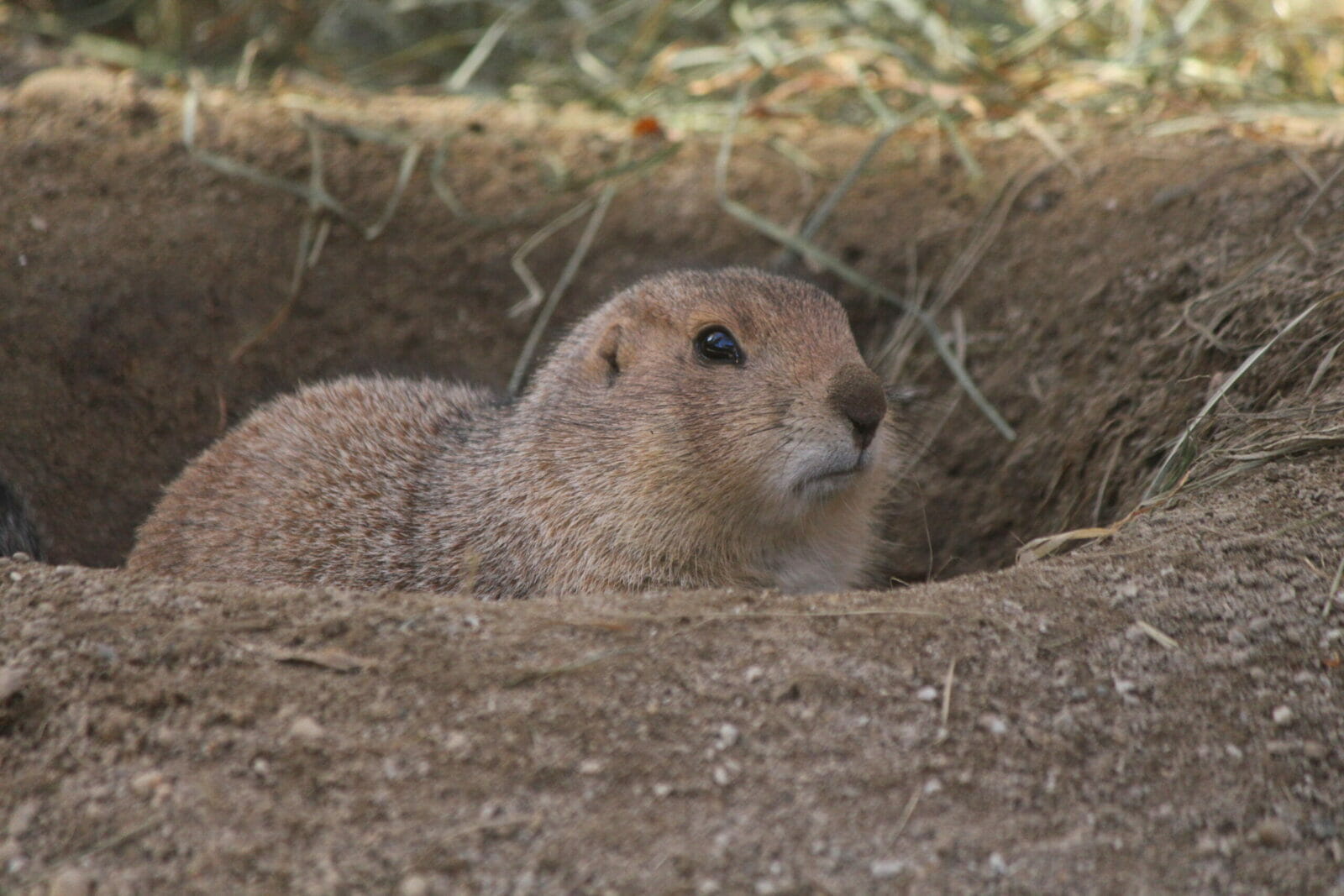
Prairie Dog
Cynomys ludovicianusClass: Mammalia Order: Rodentia Family: Sciuridae
Size
Length: 14-17 in Weight: 1.5-3 lbs
Lifespan
Lifespan (Wild): 3-4 years
Lifespan (Captivity): up to 8 years
Diet
Plants, insects
Habitat & Range
Prairie of Great Plains Region of the United States
Interesting Facts
- Prairie dogs are members of the squirrel family. They live in prairies and grasslands and are well known for their expansive burrows. Different chambers in their burrows serve different purposes such as nurseries for pups, sleeping, and food storage.
- Prairie dog towns (also called colonies) contain several connecting tunnels and chambers. Towns are often made up of several family groups called coteries. The largest prairie dog town was 100 miles by 250 miles and was home to over 400 million.
- Prairie dogs are very vocal and communicate through barks, yips, chattering, and other noises. If a predator is spotted, a prairie dog will raise an alarm call to alert its neighbors.
- In the wild, prairie dogs only occupy about 2% of their original range. This is due to introduced diseases, loss of habitat due to agriculture, and from extermination when they are viewed as pests. Some regions have placed restrictions in order to help save the few remaining populations.
Conservation Status
Least Concern
Threats
Prairie dogs have a large population, but their numbers are decreasing. Major threats faced by this species are diseases (specifically the sylvatic plague), habitat loss to agriculture and urbanization, and poisoning.
